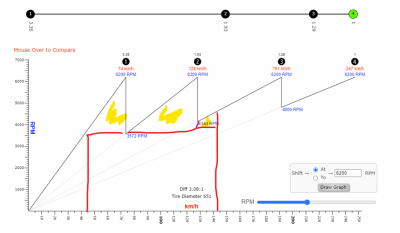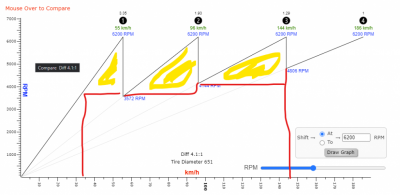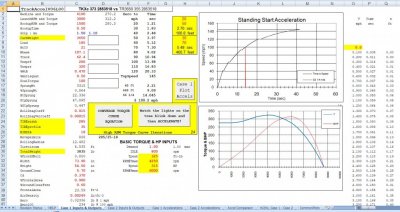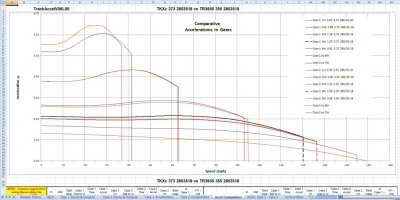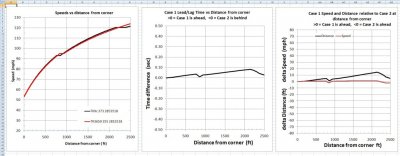Norm, you are over-thinking this.

Putting all the variables of downstream gearing into play isn't "rigorous," it's "unknowable." There are infinite variations and possibilities from car to car. With the right gearing you could theoretically move a train with a motorcycle engine.
Perhaps you should try to stretch your understanding of this. I don't expect you to be able to do the math in your head, or realistically on paper. Just at least be able to picture how it works.
None of those other variables are "unknowable" . . . unless a person is unwilling to either track them down or develop a decent basis for estimating them.
My spreadsheet is based on physical quantities involved in vehicle acceleration and the mathematical relationships among them. It doesn't care what the car is, or what engine is under its hood, or what any of the other nearly 80 independent variables I'm including have as values.
Your HP-only approach and speeds vs rpms can't even begin to give you the information that's in the charts a few posts back.
The question was, what is more important torque or hp? The answer is both.
I would never consider torque alone when dealing with acceleration, and acceleration for me is a much bigger picture than just drag racing.
You need to simplify and just focus on the engine, because everything after the crank can be modified one way or another via gearing.
Just focusing on the engine is the way people new to the car hobby think, because they don't know any different, and they haven't had exposure to the math/engineering involved that would lead them think there might even be more to it.
To use a ridiculous example, if you have a massive engine that delivers 5,000 lb feet of torque per power stroke but only fires once every 15 minutes, you could move a house but you won't accelerate that house very quickly. You would have a ton of torque but not much HP.
What's your point here? Working with something like a sixteeth of a HP doesn't tell me anything I couldn't do
with less effort straight from the basic data of 5000 lb*ft @ 1/15 of an rpm.
Assuming vehicles have the same gearing, weight, and traction, I can't think of an example where a model that has more torque and less HP accelerates faster. I think the opposite is true.
As long as you keep the engine running optimally around peak power rpm, sure. But if you're operating down at peak torque rpm it's going to be the other way around. Not all acceleration happens at a drag strip, not all acceleration that matters happens at the drag strip, and not all acceleration involves rpms in the vicinity of peak power rpm. Drag racing tends to get in the way of understanding this, and there's plenty of history of drag racing enthusiasts downplaying rigorous thinking in favor of an "everybody knows this" kind of thinking.
I was once young enough to lack the knowledge to think any different myself. I still have the Hot Rod special publication that changed my mind on this forever.
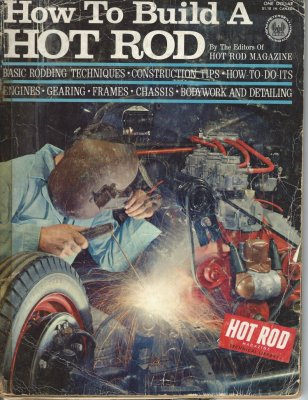
Norm


